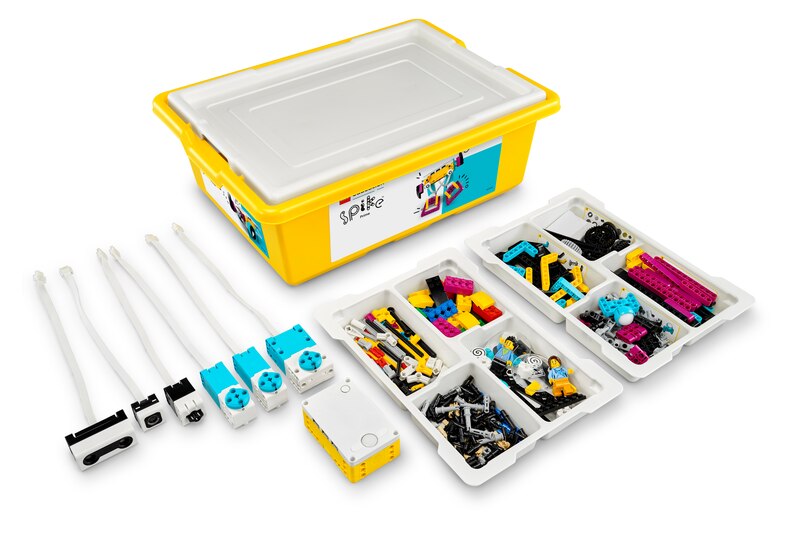Conducting a Hands-on Science Project on Wind Speed & Measurement using LEGO® SPIKE™ Prime?
Exploring Wind Speed as a part of a Science Project:
Wind speed measures how rapidly air moves in a specific direction at a particular location. You can commonly quantify it in units such as meters per second (m/s), kilometers per hour (km/h), miles per hour (mph), or knots (nautical miles per hour).
There are several methods to measure wind speed, including:
- Anemometers: Cup anemometers use rotating cups to measure wind speed directly.
- Wind Vanes: Indicate wind direction and are often paired with anemometers for combined data.
- Pitot Tubes: Measures airspeed in aviation by comparing pressure differences.
- Remote Sensing: Doppler radar and LIDAR ((light detection and ranging) offer detailed wind data over large areas and different altitudes.
Benefits of Knowing Wind Speed for Your Science Project:
- Weather Forecasting: Crucial for predicting storms and severe weather.
- Aviation Safety: Ensures safe takeoffs, landings, and efficient flight.
- Renewable Energy: Vital for planning wind farm locations and energy output.
- Construction: Helps design structures to withstand wind loads.
- Agriculture: Aids in crop management, pest control, and irrigation.
- Environmental Monitoring: Tracks air quality and pollution dispersion.
- Sports and Recreation: Essential for outdoor event planning and safety.
LEGO® Education SPIKE™ Prime Set: Wind Speed Project
Let’s talk about wind!
We can fly kites and drones on windy days, but playing football, badminton, or baseball might be tricky due to unpredictable ball movement. Securing decorations and picnic items on a windy day may be problematic because the strong gusts can easily blow them away, leading to potential mess and disruption.
Wind varies in strength, and the Beaufort Scale helps us classify it, similar to a wind speed meter. To measure wind as a part of your science project, we use anemometers to determine speed and direction. These tools aid meteorologists in weather prediction and ensure pilot safety.
The educator should review the student material provided in the LEGO® Education SPIKE™ App to stimulate more classroom discussion. This will enable them to engage learners effectively in science projects and facilitate meaningful conversations about the content.
Get Ready to Build
LEGO® Education SPIKE™ Prime Set is equipped with an impressive array of 528 building elements, encompassing bricks, motors, sensors, and a hub to facilitate smooth science project. Additionally, educators can access free online self-guided teacher training, enhancing technical proficiency and pedagogical skills.
- Align Motors Correctly: Ensure the motor is placed correctly during building, as it affects how the model works with programming.
- Repurpose the Model: If you’re short on time, you can use a simpler version of the model without all the character elements.
- Use the Light Matrix: You can use either another motor or the arrows on the Hub Light Matrix to show which way the wind is blowing.
- The Beaufort Scale: The colors on the model represent wind strengths based on the Beaufort Scale.
It was made in 1805 and describes wind like this:
Blue: Light to gentle breeze (1-3 mph or 0.5 – 5.5 m/s).
Green: Moderate to fresh breeze (13-31 mph or 5.5 – 13.8 m/s).
Yellow: Strong wind to very strong wind (31-54 mph or 13.8 – 24.4 m/s).
Red: Storm to hurricane (55 mph and higher or 24.4 m/s and higher).
So, the colors on the model help us understand how strong the wind is, from a light breeze to a powerful hurricane.
Add more Challenges to the Science Project:
- Expand the wind indicator’s range to 180 degrees and challenge your students to recalibrate it. Observe their problem-solving skills and adaptability.
- Please encourage your students to get creative and design their own wind indicators. This hands-on activity can foster innovation and critical thinking.
Refer to the “Coding Tips” section in the LEGO® Education SPIKE™ App for valuable insights and guidance on coding with the SPIKE™ Prime Set and the detailed PDF.
Time for Assessment:
This lesson’s assessment methods include a teacher observation checklist and student self-assessment. The checklist assesses students’ performance levels, considering calibration skills, data unit adaptability, and the correct approach to incorporate dual cloud data (wind speed and direction) in their program.
For self-assessment, students can choose from three levels: “Blue” for displaying two wind speeds from three locations, “Yellow” for reading four wind speed categories from three areas, and “Violet” for adding and programming an extra motor to show wind direction in each location. These assessments help gauge students’ progress after implementing the science project.
In conclusion, understanding wind speed and its practical applications, as demonstrated through the LEGO® Education SPIKE™ Prime Set project, empowers students with valuable knowledge and problem-solving skills, enhancing their ability to interact with the natural world and engage in innovative learning experiences.






Recent Comments